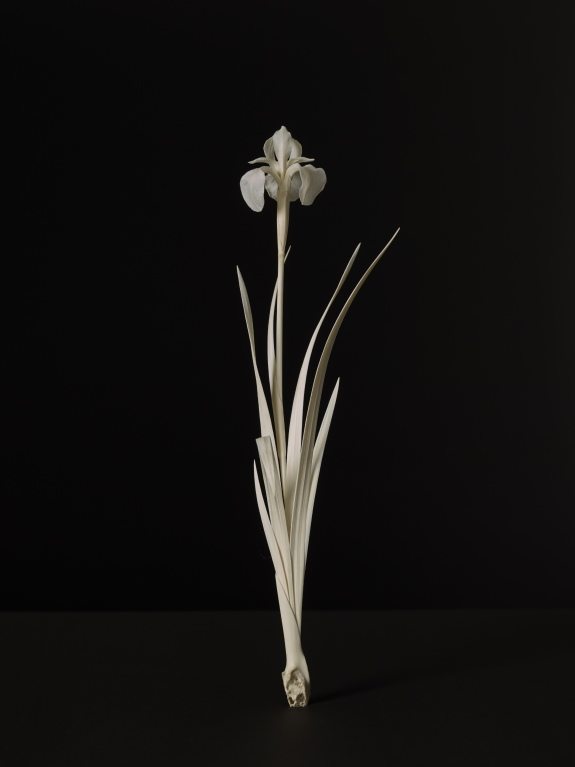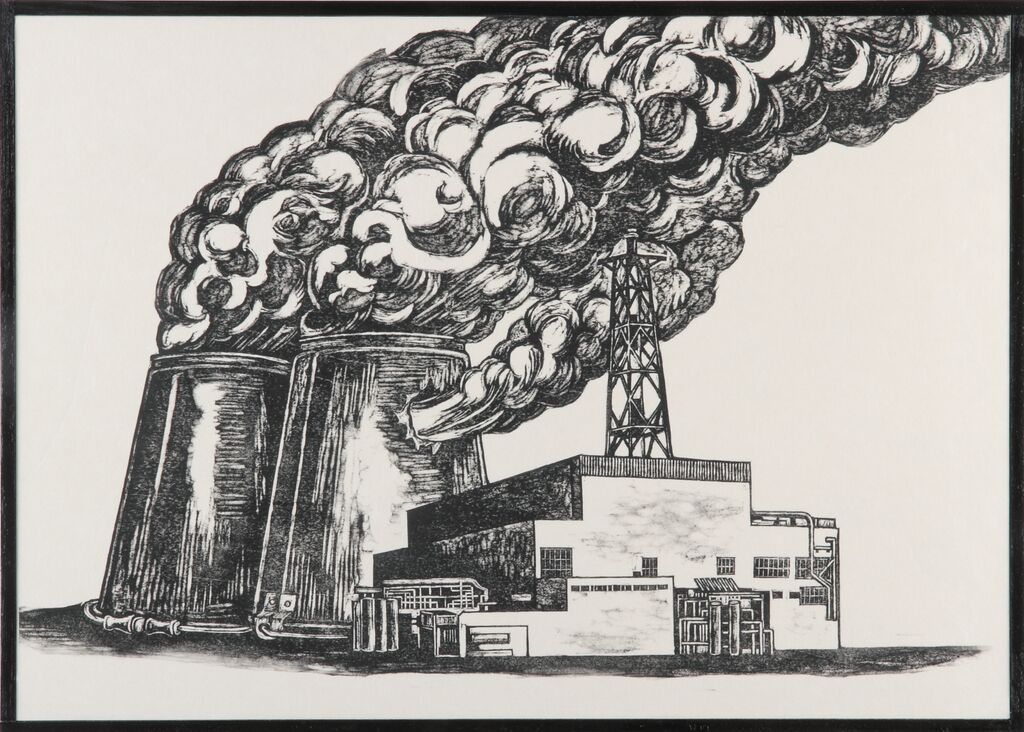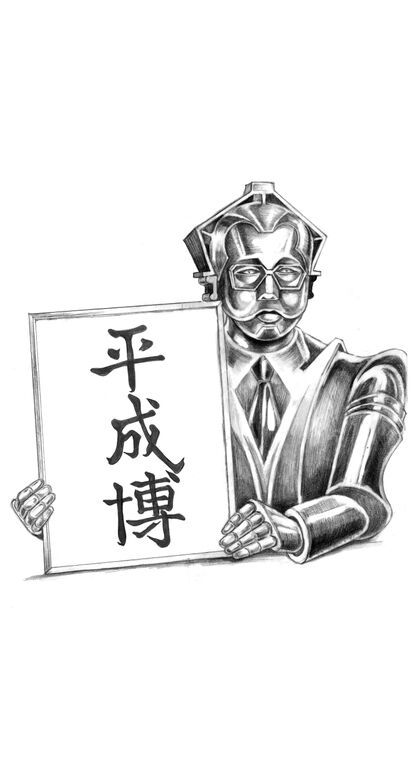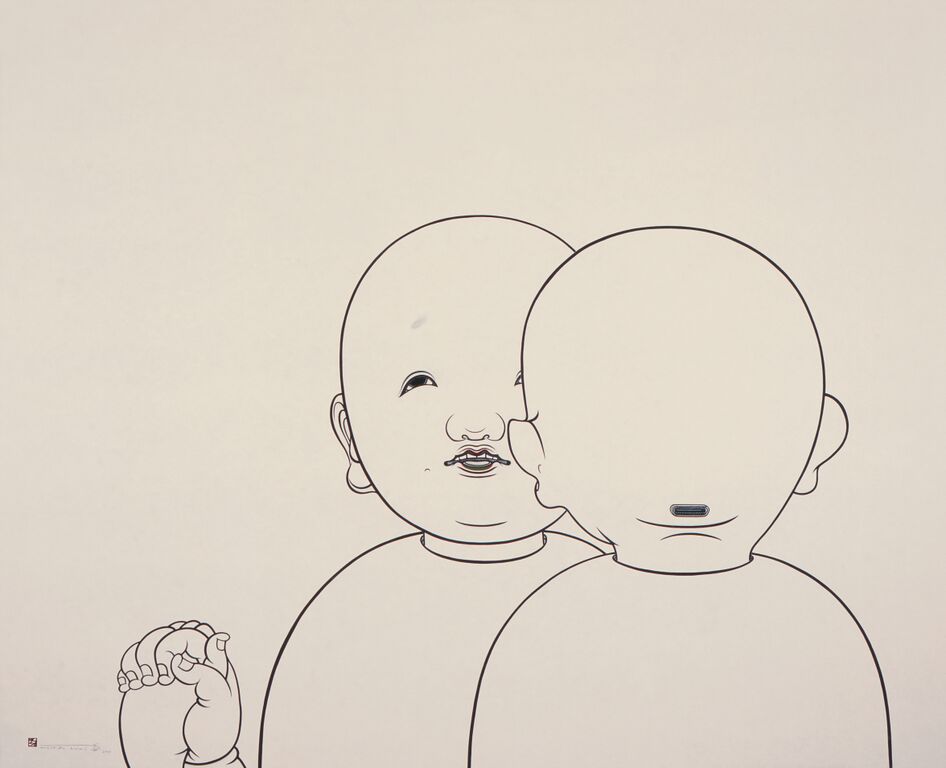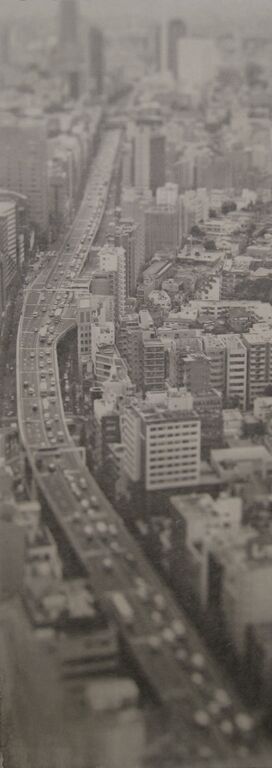Today, White Rainbow opens Surface Tension; a group show that explores the work of four contemporary Japanese artists. Masaya Hashimoto, Sachiko Kazama, Kumi Machida and Hidenori Yamaguchi’s work is complex and individually nuanced, yet they all approach modern-day Japan using techniques that have, in some way or other, sprung from tradition.
There is also a sense of aesthetic coherence between the works, all artists choosing to depict their subjects in monochrome with the occasional rose hue. The work is powerful yet often calm, ordered and precise. Here, all four artists and the gallery explain the choices and tensions that exist in the selected works.
What brings these four Surface Tension artists together?
White Rainbow: The four artists participating in the exhibition all create exquisitely accomplished artworks which spring from traditional technique yet offer perspectives on the contemporary. Yet the focus is not on traditional technique and skill, but rather how they’ve used this as a tool to achieve their contemporary vision, which technically and expressively exist together.
Does life or death win in your work — or do they both exist in harmony?
Masaya Hashimoto: Many people associate a piece of bone with death. It comes from a reaction with factual information that it’s the remains left after an animal has died. If one looks at a bone for the first time (without such a posteriori), perhaps it might mean something different. I am interested in the essential qualities that come into your sights without preconception. You can say my work is adding the image of a flower instead of the death, but I could say it’s about taking off the veils of fixed information. The impression of life or death is dependent on the condition of the viewer – their physical or mental condition can reflect something different, or how my work is lit. In other words, life and death is separated by perceptions, but my work does not have such separation.
Should visual art play a role in broadening or reshaping our knowledge of history?
Sachiko Kazama: I believe that artworks should not take the responsibility for enlightenment and education. If it had to take on such a role, there would be a danger of it becoming too authoritarian and self-righteous. I believe that historical facts cannot be taught by others (or by prevailing doctrines), but should instead be acquired through self-exploration. Also, I do not like the tendency to pressure art forms to take on a certain role. Even if you find a historical factor in my artwork, it is not my motivation. What you see is my expression and it is not my purpose to transcend my thoughts.
Do these works exist as fragments of the past, or future for you?
Kumi Machida: Neither. Only the present, suffice it to say I would like them to expose the universal human relationship.
How important is traditional, technical training for a contemporary artist?
Hidenori Yamaguchi: Expression in contemporary art is very diverse, yet I also believe that artists can achieve their vision by being technically disciplined. One of the purposes of artists’ expression is to reach an unknown world, whether the technique itself is traditional or not, I believe it is important to refine a technique appropriate to oneself. It is still important to learn from the past, and mastering technique is one way to respect the accumulated layers of tradition.
Surface Tension runs at White Rainbow Gallery until 7 November
